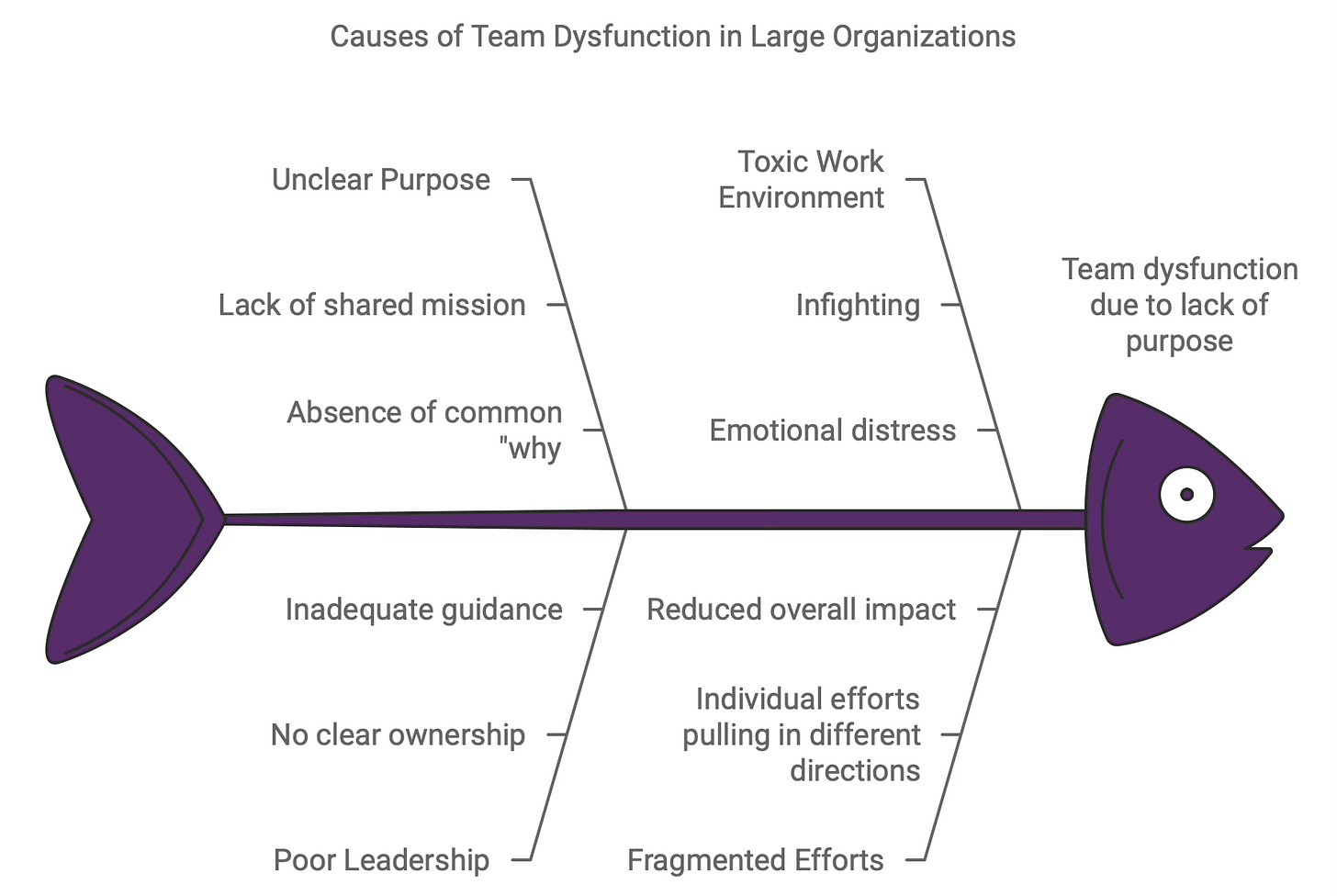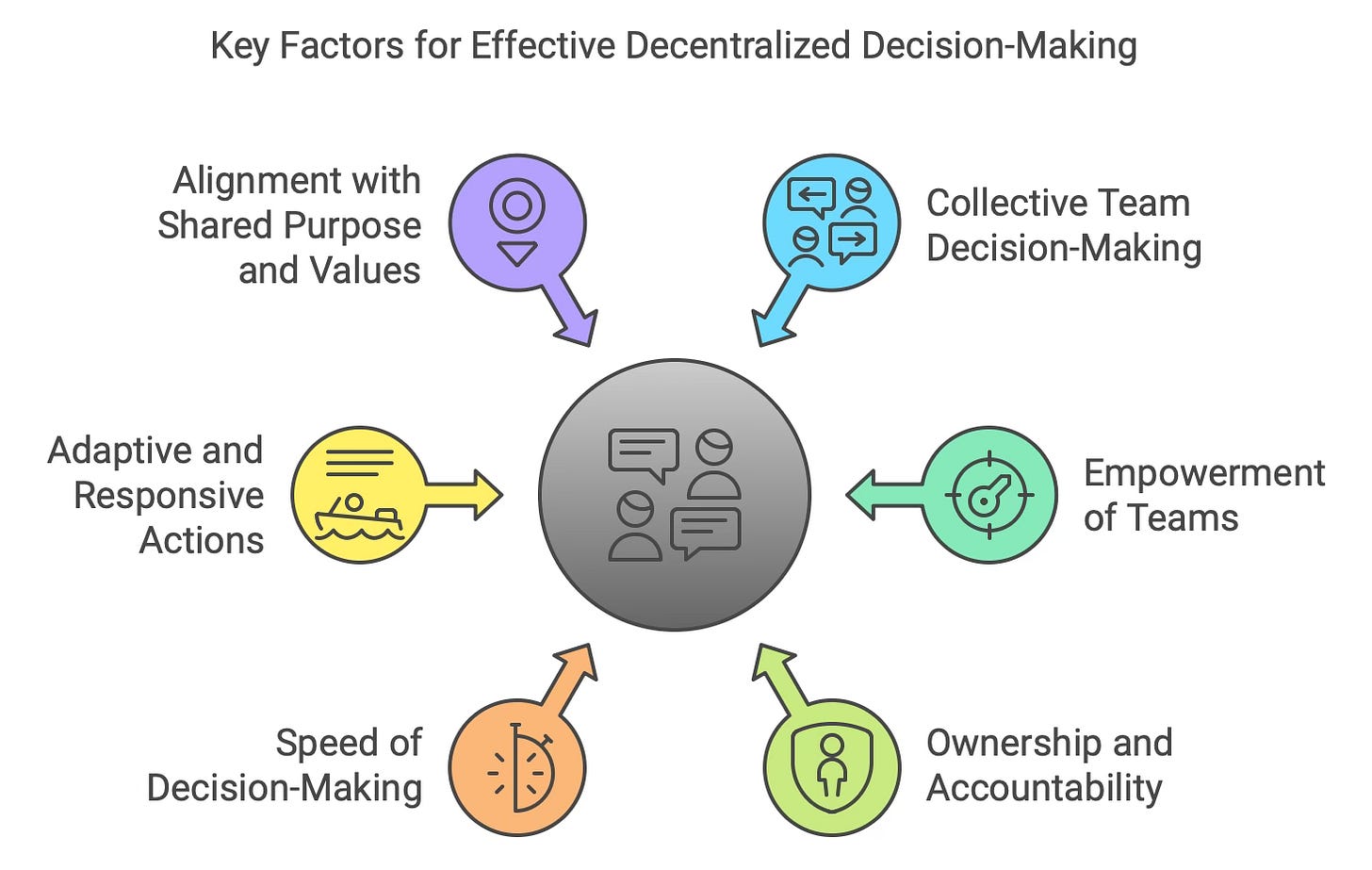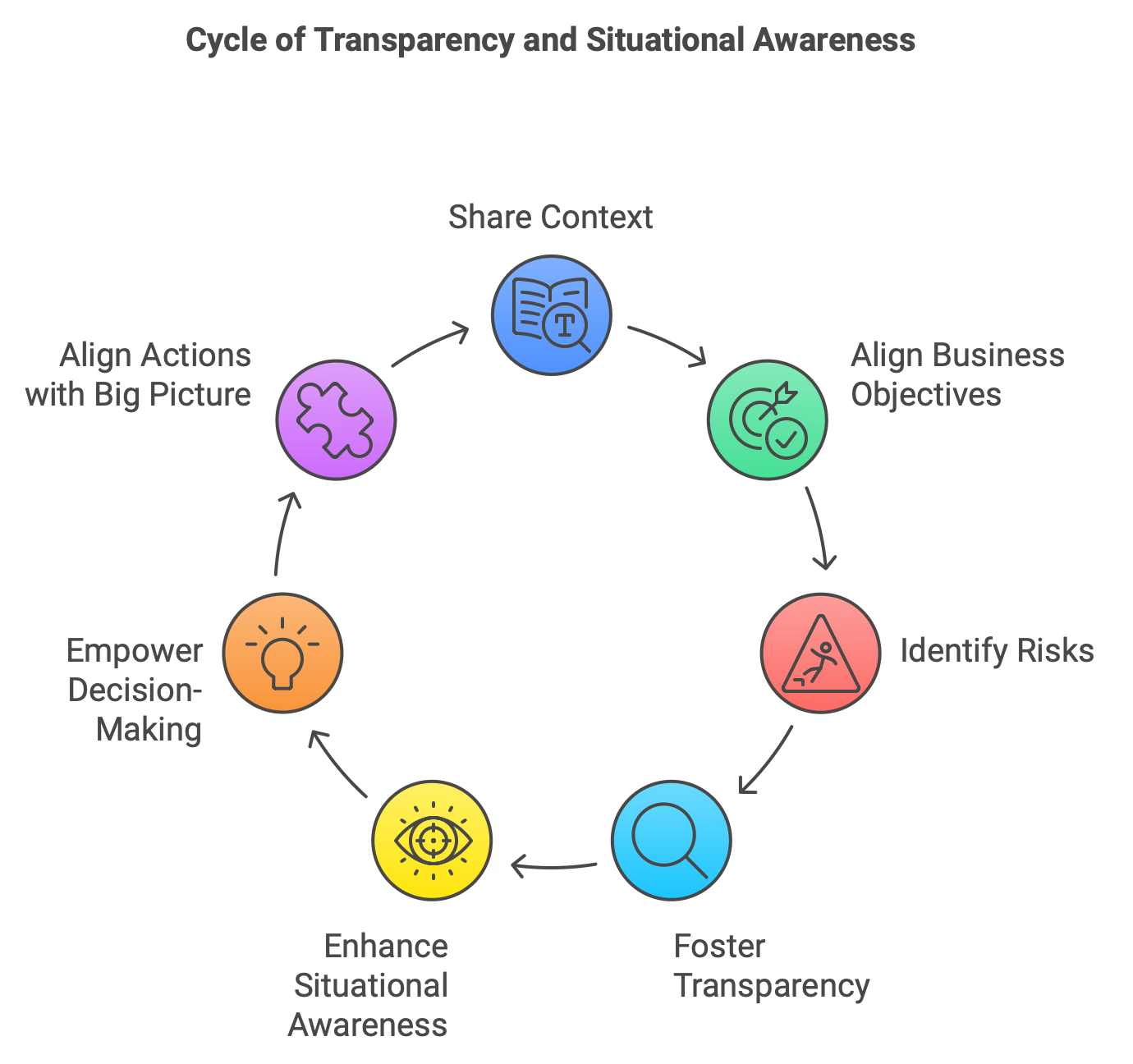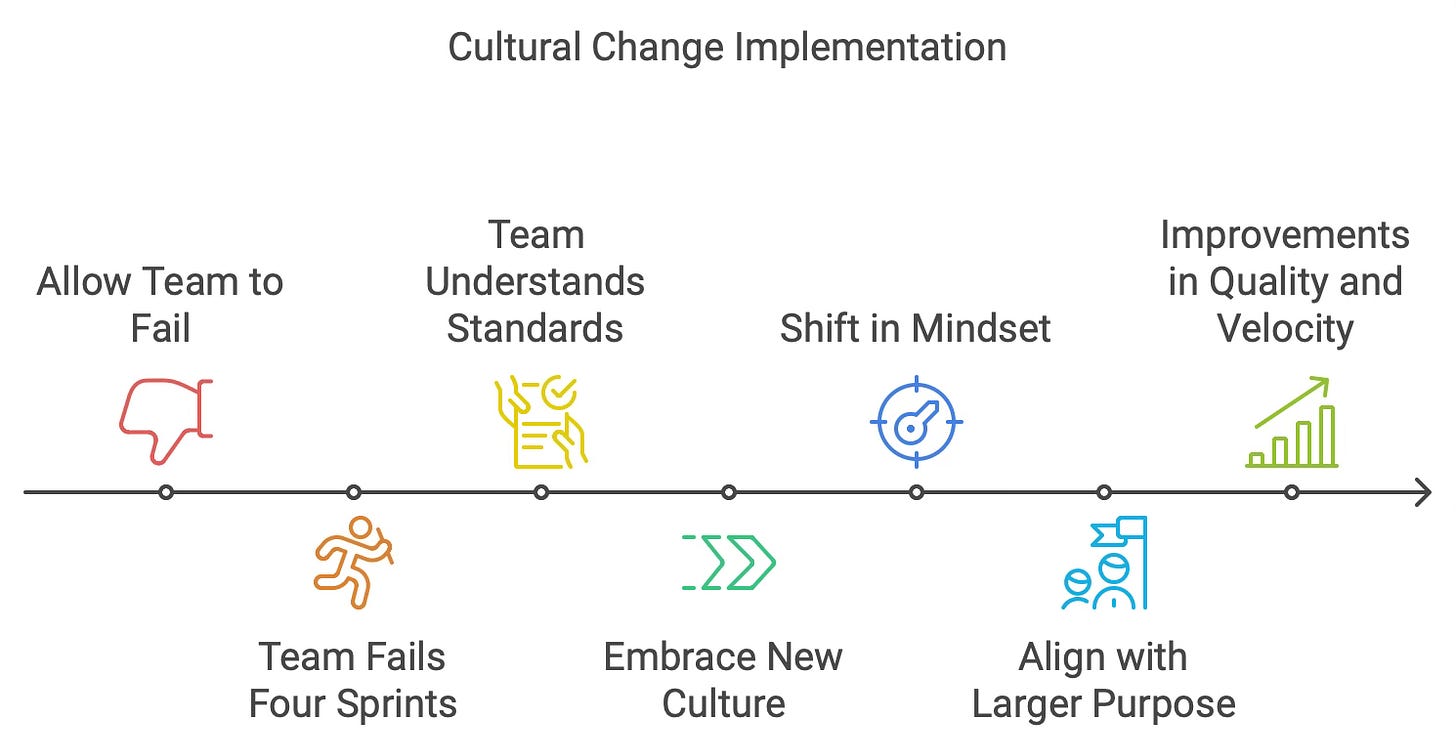Leadership and Culture: From Startup to Scaling Teams with Purpose
Building a Purpose-Driven Team: Empowering Decision-Making, Ensuring Accountability, and Fostering Transparency for Lasting Success
In the early days of my startup, my co-founders and I set the culture implicitly. When you're a small team, interacting with everyone daily, culture develops organically through shared values and behaviors. However after acquisition by a Fortune 50 tech company, as we scaled, and I found myself running teams of 600+ people, it became clear that implicit culture wasn't enough. You have to define your culture explicitly to maintain alignment, engagement, and productivity at scale.
The Shift to Explicit Culture
As your organization grows, it's impossible to rely on organic cultural development. You can no longer assume that everyone understands or embodies your values. At this point, it becomes critical to establish clear cultural guidelines:
Define core values that everyone can rally around.
Set clear expectations for behaviors, roles, and responsibilities.
Adopt processes like Scrum to create structure and accountability.
But beyond processes and roles, the most important element I learned to establish was the why—a clear sense of purpose that ties the entire team together.
The Power of Purpose: Establishing the "Why"
When you scale a team, it’s not just about defining roles and responsibilities—it’s about making sure that everyone is aligned around a shared sense of purpose. People need to understand why they’re doing what they’re doing, and how their work contributes to the larger mission of the organization.
At my startup, this happened naturally when we were small. Everyone understood the mission because we were so close to it. But as I moved on to larger teams, I saw firsthand what happens when purpose is unclear. People lose motivation, and their work becomes fragmented. Without a common "why", individual efforts can pull in different directions, reducing the impact of the entire team.
I experienced this firsthand when I joined a large tech company and inherited a dysfunctional software team. There was no clear ownership, infighting, and a toxic work environment. People were so lost that some came to me crying. I knew the culture had to change, and fast.
Resetting a Dysfunctional Team with Purpose
To reset the culture, I organized a week-long offsite with the leadership team. The goal was to establish new roles and processes, and to align the team around a shared sense of purpose. I made it clear that the old roles no longer existed, and we would establish new ones based on our core values and the purpose we wanted to drive forward.
Instead of assigning roles top-down, I allowed the team to self-select their new responsibilities. By the end of the week, everyone had chosen the roles I had anticipated for them, but the difference was that they felt a greater sense of ownership because they had chosen those roles themselves.
Along with this, we established a Quality Management Strategy (QMS). But more than just a checklist, the QMS became part of our purpose-driven culture—it wasn't just about what we accomplished, but how we accomplished it. We made it clear that success wasn’t just about individual performance; it was about how well the team worked together toward our shared goals.
Decentralizing Decision-Making: Empowering Teams at the Edge
One of the most important lessons I learned is that a collective team will always make better decisions than any single person. As leaders, it’s tempting to try to control everything, but the best leadership comes from pushing decision-making to the edges—where the work is happening and where the most relevant knowledge resides, from a chess master to a gardener if you will.
By empowering my team to make decisions day-to-day, I was ensuring that those closest to the challenges and opportunities were the ones solving problems. This approach not only fosters ownership and accountability, but it also speeds up decision-making because people don’t have to wait for approval from the top.
The team knows best what they need in their areas of responsibility, and by trusting them to make those decisions, leadership allows for more adaptive and responsive actions. This was a critical part of resetting the culture: giving the team the authority to make decisions as long as they were aligned with our shared purpose and values.
Transparency and Situation Awareness: Fueling Better Decisions
However, for decentralized decision-making to work, transparency is key. If the team doesn’t have access to the right information, they can’t make the best decisions. Ensuring that everyone has situation awareness—a clear understanding of what's happening within the organization, the market, and their projects—was vital in supporting their decision-making.
I made it a priority to foster transparency in both information and decision-making processes. This meant openly sharing the context behind decisions, our business objectives, and potential risks or challenges. By giving the team access to all relevant information, I ensured that they weren’t making decisions in a vacuum. They had a holistic view of what was happening across the organization and could align their actions accordingly.
When the team understands the big picture, they make better choices that not only benefit their immediate tasks but also contribute to the overall success of the organization. Transparency became a core value, enabling everyone to act with situational awareness and take ownership of their decisions.
Accountability Through Clear Roles and Responsibilities
A crucial part of resetting the culture was establishing clear roles and responsibilities (R&Rs) for the team. These R&Rs weren’t just vague descriptions; they were explicitly written to ensure accountability. Each person knew exactly what was expected of them, their role within the team, and how their work aligned with the larger goals of the organization.
By clearly defining these responsibilities, we eliminated confusion over ownership and fostered a culture where people were accountable not only for their work but also for how their actions impacted the rest of the team. This sense of accountability created trust within the group, as everyone knew their role and could rely on others to fulfill theirs. It also empowered the team to make decisions confidently, knowing they had the support and clarity needed to succeed.
Enforcing the Cultural Reset and Purpose
Cultural change is hard, especially when a team has been toxic or dysfunctional. To reinforce our new way of working, I allowed the team to fail four sprints without intervention. For instance, they initially didn’t follow through on submitting unit and functional tests. By letting them fail, I demonstrated that our new standards were non-negotiable. After four sprints, the team understood the leadership was serious, and they began to embrace the new culture.
This shift in mindset—from individual performance to team success—was crucial in aligning the team with our larger purpose. As everyone committed to the new culture and understood why it mattered, we saw significant improvements in both quality and velocity.
Building Resilience Through Shared Purpose
Our transformation was completed about six months before the COVID-19 pandemic hit. With teams spread across three geographical locations and two countries, we had already built a culture of resilience and purpose. When the pandemic forced everyone to work from home, we only missed one sprint of productivity.
Because the team was so aligned with our shared purpose and embraced the processes we had established, we continued to operate with the same high velocity even in a fully remote environment. This wasn’t just about good processes—it was about the strong sense of purpose we had instilled in the team.
Key Takeaways
Explicit Culture Matters: As your team scales, you must define values, behaviors, and processes explicitly to ensure alignment.
Establish a Shared Purpose: Defining the "why" behind your work unifies the team and drives collective motivation, ensuring everyone pulls in the same direction.
Empower Decision-Making at the Edge: A collective team makes better decisions than any one individual. Push decision-making to those closest to the work, where relevant knowledge exists.
Foster Transparency: Provide open access to information so that everyone has situational awareness to make informed, aligned decisions that support the larger goals.
Ensure Accountability: Clearly define roles and responsibilities to ensure accountability within the team. This clarity builds trust and empowers decision-making.
Give Ownership: Allowing team members to self-select their roles fosters deeper commitment and ownership of their responsibilities.
Prioritize Team Success: A top performer who disrupts team dynamics can cause more harm than good. Prioritize team success over individual brilliance.
Commit to Quality: Reinforce your standards, even if it means allowing the team to fail initially. Once they understand the importance, quality and velocity will improve.
Build Resilience Through Purpose: A clear sense of purpose creates resilience. When disruption hits, like a global pandemic, teams aligned around shared goals will adapt and thrive.
Leadership isn’t about controlling every decision or solving every problem. It’s about creating a culture with a strong, shared purpose, fostering transparency, and empowering your team to make decisions where the real work happens. When you do that, your team becomes stronger, more resilient, and ultimately more successful in achieving its goals.









